

|
A. Cologne cathedral Added to the list in 1996 - visited by Annick and Maarten in 2008 The Dom of Cologne, a gothic masterpiece, took 6 (!) centuries to be completed. During all this time, the builders stuck to the original plans. The place where the cathedral was built has been a place for catholic worship since the 4th century. Own impression Annick: I've been in Cologne a number of times, mostly to attend concerts. Each time you arrive by train, the Dom is the first building you see when coming out of the station. And it is an impressive sight! I visited the cathedral a couple of times and even climbed the stairs to the top. A magnificent view over Cologne and its surroundings was the welcome reward! Well worth a visit! Maarten: I have been here only twice. The first time I was stuck here because of a three hour delay of my train, so the last connection to Brussels had already left. I was given a hotel close to the Haubtbahnhof and although I was here for only a short night, the first thing I saw when leaving the station was the dark silhouette of the Dom, towering above everything. Obviously, the Dom is the highlight of this city, although I really want to recommend the Museum Ludwig, one of the most impressive contemporary art musea I have ever seen. I've really enjoyed the Mondriaan exhibition, one of my favourite painters. (top) |
 The impressive Dom. |
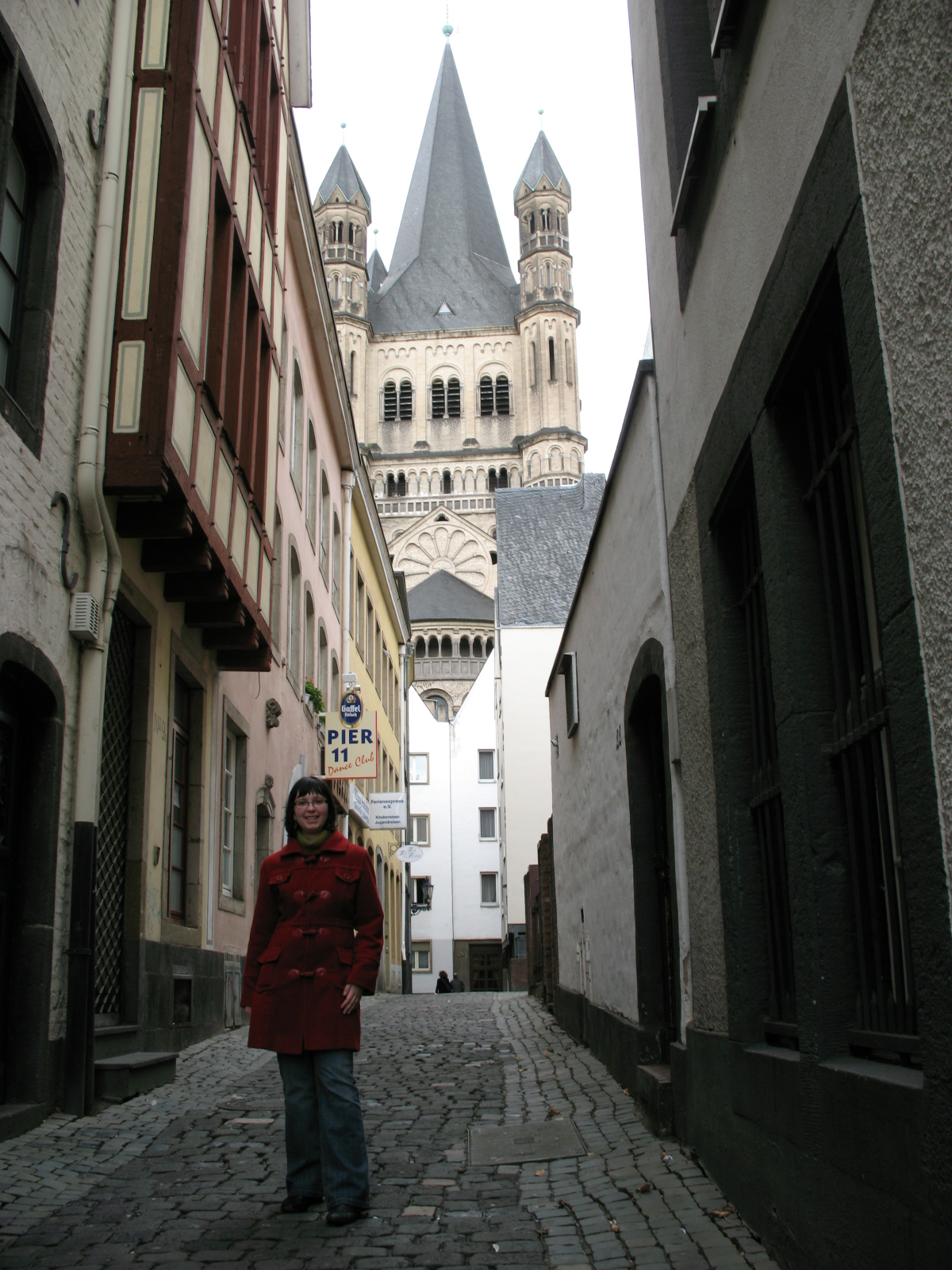 Annick in one of the narrow strees near the Dom square. |
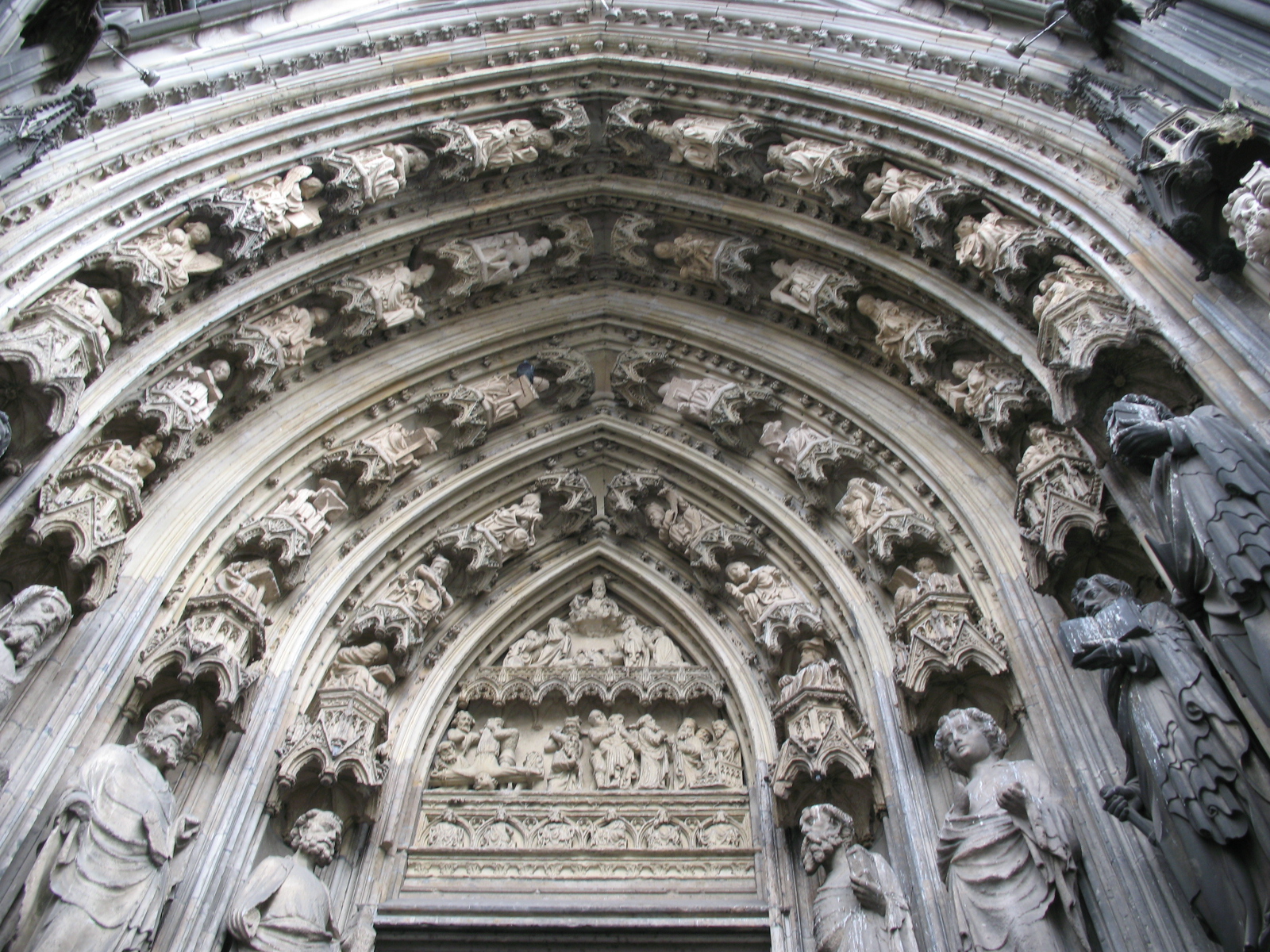 The entrance portal. 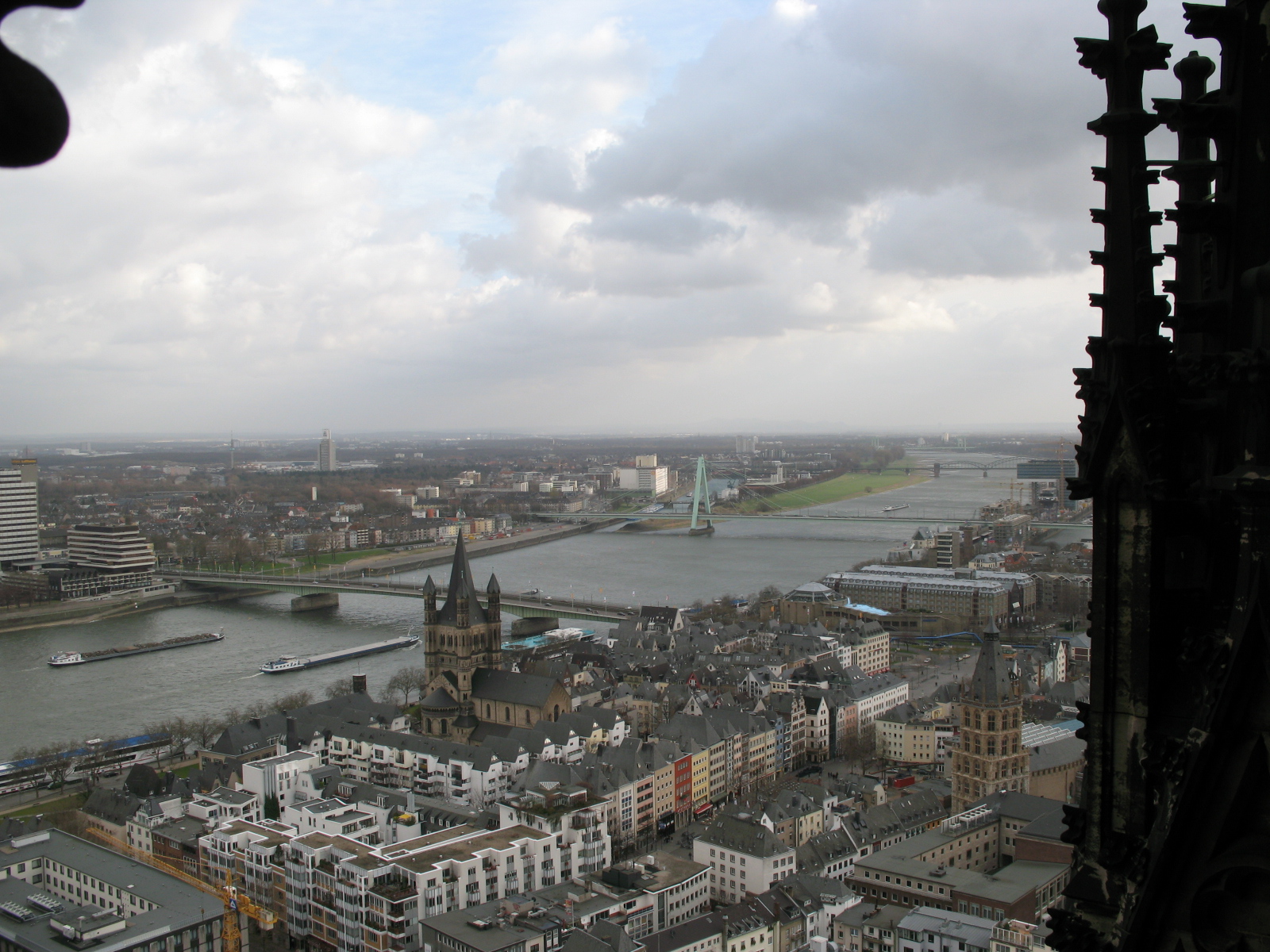 A view from the top of the Dom. |
![]()
|
B.
Roman Monuments, Cathedral of St Peter and
Church of Our Lady in Trier Added to the list in 1986 - visited by Maarten, Annick & Febe in 2014 Trier, situated near the strategic Rhine border, has a long history as a Roman colony, starting in the 1st century AD. In the 2nd century, it had grown to become an important trading centre and one century later it even became one of the capitals of the tetrarchy, in a period marking the recovery of the Roman empire under emperor Diocletianus, when the empire had 4 capitals. It was the capital of Constantius Chlorus, the western Caesar. Own impression Annick: Trier was a lovely little city and I quite liked the Porta Nigra, because it was unlike anything I had ever seen before. For me, that was the only highlight in the city itself I'm afraid :-) I especially loved the drive up there. We decided not to take the highway and head through secondary roads to the city - which gave us a great look on the countryside surrounding the area. Much more my thing ;-) Maarten: This is definitely my sort of thing! It’s stepping back in time and wandering from the one monument to the other. Most of the buildings are epic in their size, beauty and history. I had an itinerary mapped out (see: http://ourworldheritagebe.wordpress.com/2014/08/25/ancient-history-is-always-near-in-trier/), and it was fun to follow it, because we never had to wait long to get to the next highlight. Seriously: the concentration of (Roman) monuments is extraordinary here! But it’s not only the ancient architecture that gives this city its charm: the Hauptmarkt (central market square) is cosy and extremely beautiful. A perfect spot to start your trip ánd the best place to have lunch as well. (top) |
|
|
![]()
|
C. Upper Middle Rhine
Valley Added to the list in 2002 - visited by Maarten, Annick & Febe in 2014 The Middle Rhine Valley is a natural and cultural landscape, stretching 65km along the river Rhine between Koblenz and Bingen. The site includes numerous (60) small, historic towns (and associated vineyards), and the flanks of the valley are punctuated with as much as 40 hill top castles and fortresses, most of them in ruins. The area illustrates a long history of human occupation in a varied natural landscape. Human settlement in this area dates back to the last ice age. The river has been a transport route for trade and cultural exchange throughout Europe’s history, connecting the Mediterranean, the Alps and northern Europe. Human influence also includes the terracing of the river’s steep slopes, wine production and tourism. The Middle Rhine valley has also been an inspiration for legends, music, poetry and other artforms. For example, the most famous in a series of narrows along the course of the Rhine is the Loreley, well known for its rock, its siren and Heinrich Heine’s poem. The middle and upper Rhine terraces also bear witness to the historical course of the river. Own impression Annick: I quite liked this one, because it is much more nature oriented. I really enjoyed our first meeting with the Rhine, when we spent an afternoon in Koblenz, at the converging point of Rhine and Mosel. It was a great sunny day and the water playground was big fun for the kids! The Rhine banks itself proved for a great car drive. That day the weather was far worse, with rain and grey skies. For me the Mosel valley had more charm to it - though it is not considered UNESCO World Heritage. We'll cover that one in a later blogpost (check out http://ourworldheritagebe.wordpress.com/category/germany for that.) Maarten: There are two sides to this story. We visited Koblenz on a sunny afternoon and enjoyed every bit of it: taking some time at highlights such as the Vier Turme, Alte Burg, Florinskirche and St.-Kastor Basilica, eating delicious ice cream on the Am Plan Square and strolling around in a relaxed way until we finally reached the Deutsches Eck, where the Rhine and the Moselle converge. A few days later the weather was much more grey and cold, so we decided on a short road trip along the Middle Rhine. The kids (two toddlers and one baby) stayed in the car most of the time and we only stopped to take some pictures along the way. Our longest stop was at the Loreley rock, although I must admit it was a bit disappointing and not very impressive at all. I can imagine this is an area where you need good weather and much more time to fully enjoy the experience, maybe with a glass of local whine?... (top) |
|
Kaub and the castle of Burg Gutenfels. Note the numerous vineyards on the slopes. |
Pfalzgrafenstein castle, on Falkenau island in the Rhine near Kaub. |
|
![]()
|
D. Zollverein coal mine
industrial complex in Essen Added to the list in 2001 - visited by Maarten, Annick & Febe in 2014 The Zollverein industrial complex, representative of a crucial period in the development of traditional heavy industry in Europe, consists of the complete infrastructure of a historical coal-mining site. Its buildings are important examples of the application of design concepts of the Modern Movement in architecture in an industrial context. At the Zollverein mine, the Bauhaus idea that form must be oriented towards function is perfectly translated into reality. The methods of mining evolved as technology developed from hand picks to mechanized coal cutting. The plant closed down in 1993 because of the decreased demand for coke. The presence of this mine also had an important impact on its surroundings, from pit heaps to subsidences. The UNESCO site includes the pits, heaps, coking plants, railway lines, administrative buildings and the like. Own impression Annick: I must admit, I wasn't really looking forward to this. An old coal mine... It didn't seem that appealing to me. However, I was pleasantly surprised when I visited the site. The buildings and the whole site are very artistic, and so it is on the inside - judging by the pictures Maarten took. Febe and I stayed outside, because of the fact that a long tour in German would be a bit much for our 4-year old. We really enjoyed our stroll over the massive factory site. The whole area had a huge Tomb Raider feel to me - maybe they should look into it for the next game ;-) Maarten: This old coal mining site surprised me because of its history, its stories and its remarkable beauty. Beforehand, I wasn't really expecting it to be my cup of tea: I'm not really an industry-man. But by taking the guided tour (a must-do!), I discovered something unexpected: it was beautiful in its details (loved the old, rusty bits) and the whole story behind it was really interesting. The colours and shapes made it into a strange, iron-built piece of art. Our guide, a former employee of the mine, also provided personal information on working conditions and everyday life in the days this plant was still working. The whole experience was very impressive indeed! (top) |
|
The winding tower of Shaft XII. |
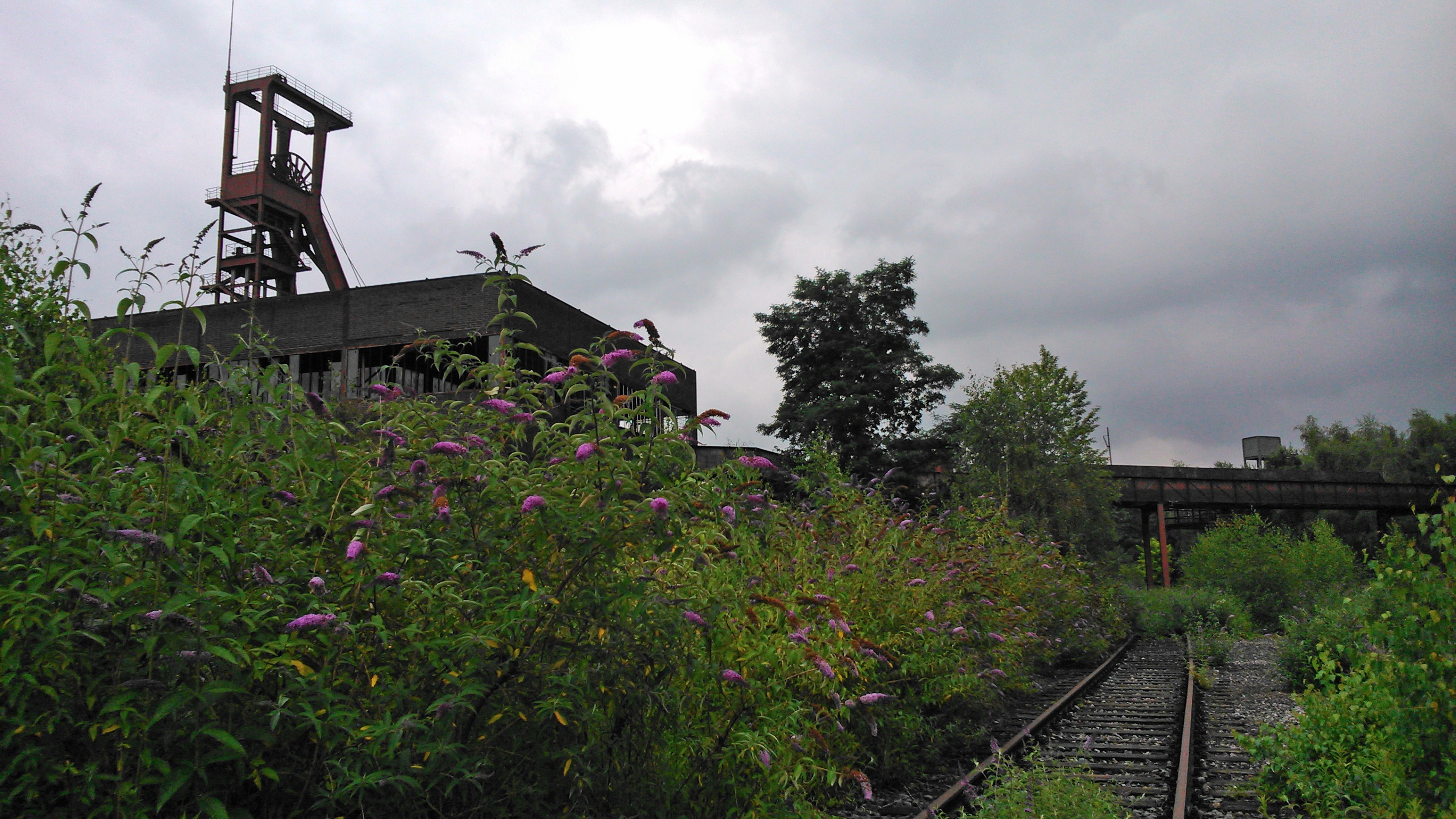 Old railway track. Former boiler house and other Bauhaus buildings. |
Building A14: the coal washery. Old metal in the coal washery. |
|
St.-Barbara, patron saint of the miners. |
Former miners' wash rooms and engine house. Top of the winding tower of Shaft XII. |
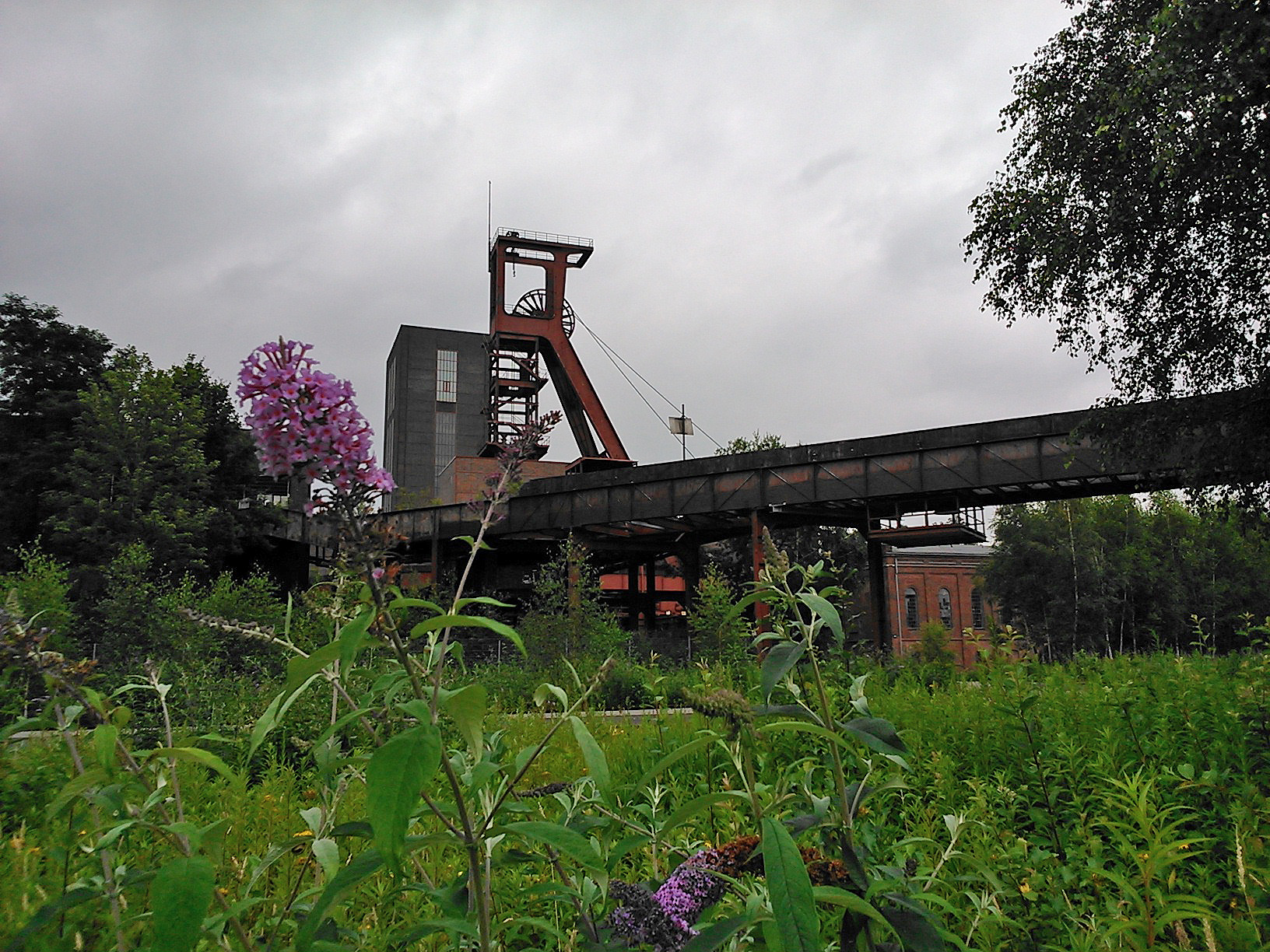 Some nature in an industrial environment. 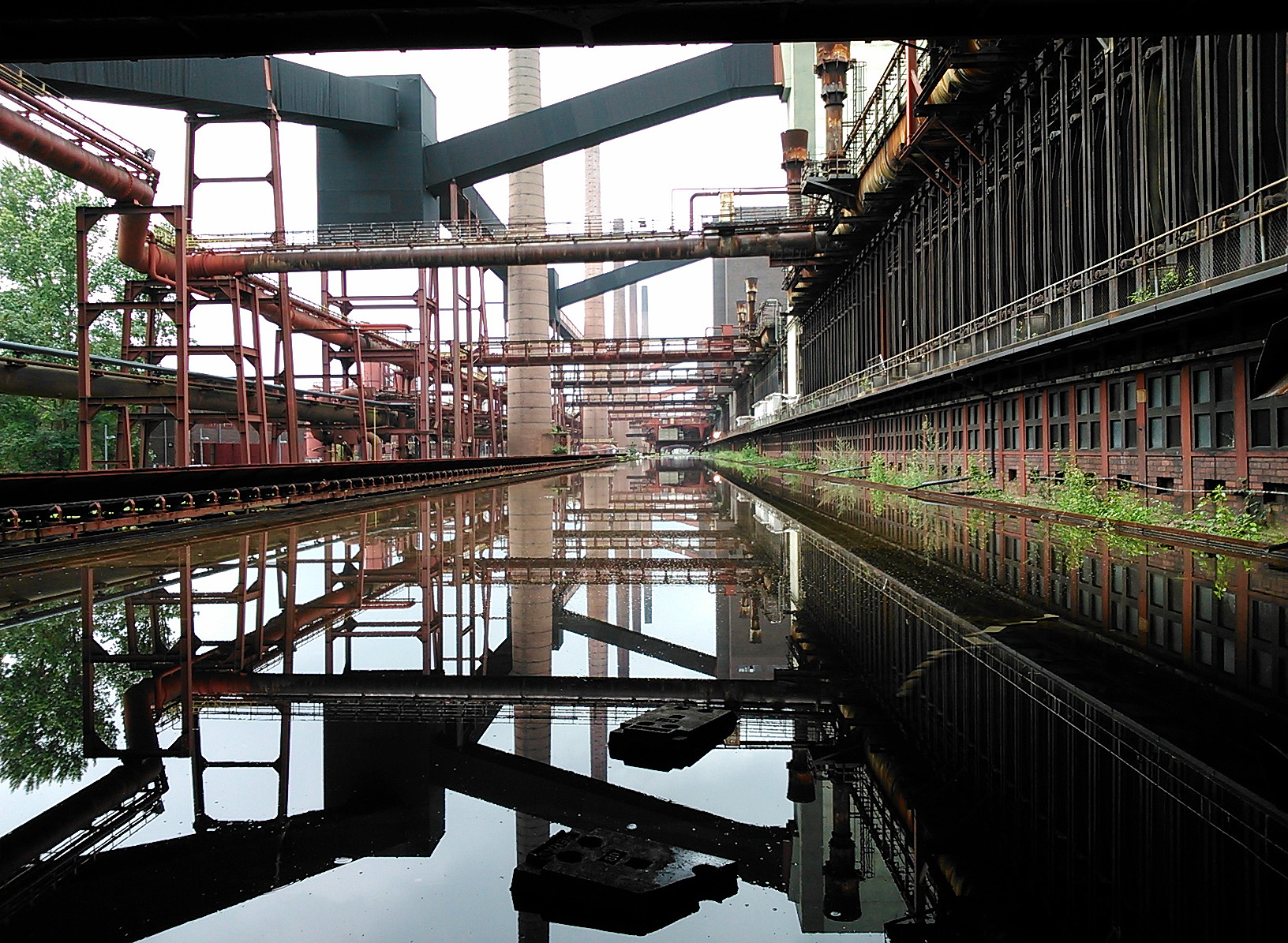 The old coking plant. |
![]()
|
E. Primeval beech forests
of the Carpathians and the ancient beech forests
of Germany Added to the list in 2011 - visited by Maarten, Annick & Febe in 2014 The Ancient Beech Forests of Germany are outstanding examples of undisturbed, complex temperate forests. Together with the other inscriptions from Slovakia and Ukraine, they exhibit the typical ecological patterns and processes of European beech ecosystems across a variety of environmental conditions. They contain an essential genetic reservoir of the beech species and many of its associated species (both plants and animals) and are also important in understanding the spread of the beech in the northern hemisphere. The five German forests (4,391 hectares in total) that have been added to the 29,278 hectares of Slovakian and Ukranian beech forests (World Heritage List 2007) in 2011 are Hainich, Kellerwald, Jasmund, Serrahn and Gumsin. Own impression Annick: I quite liked our walk in the forest itself, especially due to the lovely views we had over Edersee. My memories of this world heritage site are more about the whole experience though: the lakeside camping, the raccoons, the swims, ... I love nature, so it was great to experience a natural world heritage site for a change. Ready for more of that! Maarten: Our acquaintance with these forests was limited to the Kellerwald Forest in central Germany (near Kassel). Therefore, we obviously only experienced a fragment of the whole UNESCO property. On the other hand, given that all of the inscribed forests have the beech tree as a key species, the ecosystems they contain should be more or less comparable. We were camping near the edge of the forest (at the Edersee) and went on a half-day hike there. Because of the perfect weather and beauty of the forest and its views on the Edersee, this was a truly enjoyable experience. Except for the key species and some other trees, we didn’t see many of the associated animals or plants, though. The raccoons at our campside are North-American species and thus not native at all, but they were really great fun, even though they kept us awake for a great deal of the night. (top) |
|
Cardamine bulbifera, coralroot bittercress. |
Nightly encounter: raccoons live near to the forest. |
![]()
|
F. Bergpark Wilhelmshöhe Maarten: I will always remember this site as a perfect example of bad timing. We visited the park on a Thursday. We had a nice dinner in a restaurant at the Schloss Wilhelmshöhe (within the park). After dinner, we set off for a serious climb to the Neptune’s Basin. It was really hard work, especially with the buggy. The surroundings were nice though and luckily we arrived in time for the waterworks. I had read in my travel guide that the water displays only start at 14.30 p.m. So we waited, and kept waiting, becoming more and more confused to see almost no public, and no water… At 15.00 p.m. we decided to check the park’s website and found out… that the water works are only demonstrated on Wednesdays and Sundays. Even though we missed the spectacle, I must admit the park itself, and especially the picturesque Löwenburg castle, is worth a visit any day of the week. Nevertheless, I think we should return here to see the highlight of the park... (top) |
|
View from the Wilhelmshöhe castle: steep slope up to the Hercules monument. Hercules monument and grand cascades. |
Neptune's grotto. |
The pond with the Apollo temple. Teufelsbrücke: the devil's bridge. |
|
|
![]()